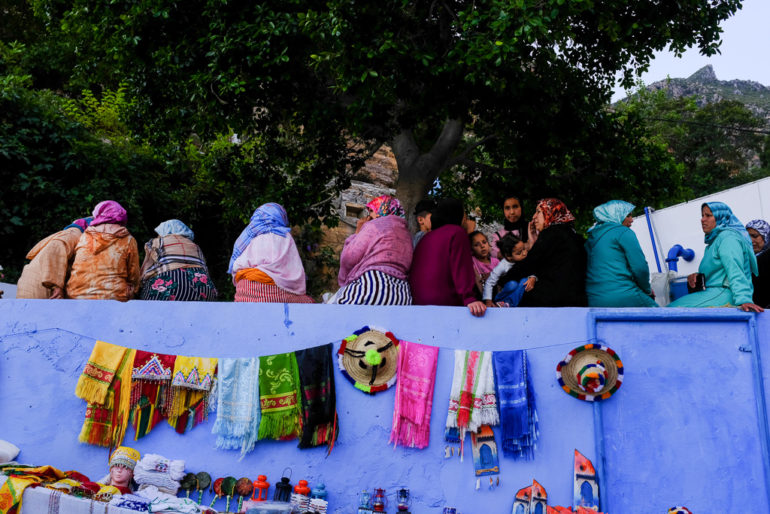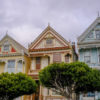It’s easy to think of Chefchaouen as just a photogenic city on social media, recognized for being entirely blue. However, it’s so much more than that. It feels like an idyllic retreat within Morocco, tucked into the mountains, with old-school charm and really friendly residents.
“Ah, you’ve found Chaouen!” remarked the old Scottish man who greeted us at our riad. He moved to this blue city 9 years ago, after falling in love with the nature and atmosphere of relaxation, and he seemed quite excited to share it with us. We had just arrived after a winding bus ride up the mountains from the bustling city of Fes, and almost immediately, we felt at peace.
We were standing on the rooftop terrace of the guesthouse, looking at the backdrop of mountains. Chefchaouen was named after these giants: chef means “look” and chaouen means “horns,” referring to the pointed shape of the peaks overlooking the town.
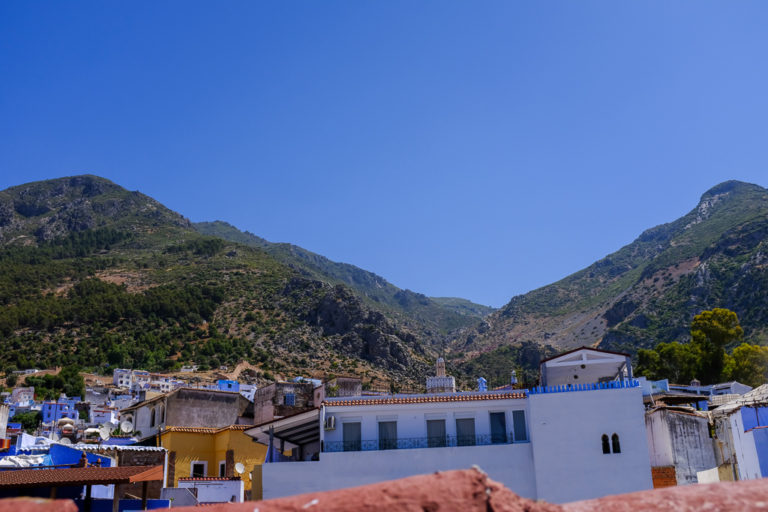
Our host traced the paths on the mountain with his finger and told us over 50% of the world’s hashish (known locally as kif) is grown here; this makes Morocco its largest exporter in the world. If you venture the trails far enough, you can even visit a hashish farm. “So, if you see a drug dealer on the streets, it’s not as seedy as you would think in other areas. He’s likely just a farmer trying to sell what he gathered in the fields,” remarked our host.
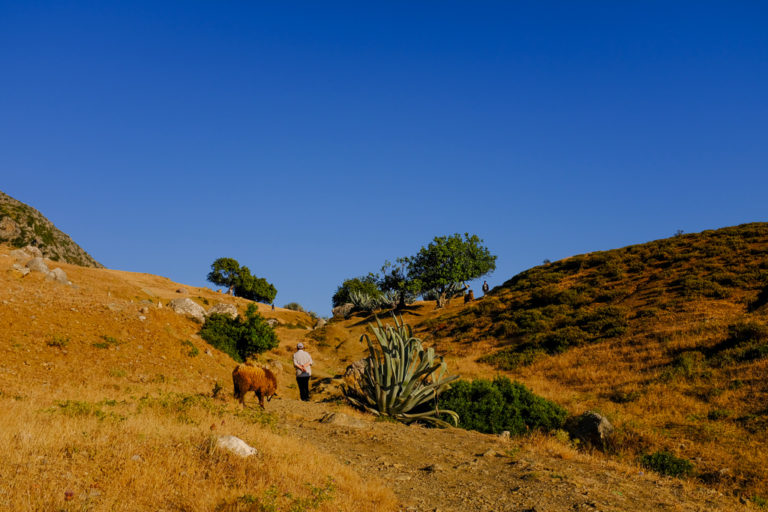
According to our host, a variety of birdlife can be found in the mountains; at times, he’s even seen raptors catching pigeons in the sky. We decided to hike up to the Spanish Mosque, and though we didn’t experience any out-of-the-ordinary sightings, we saw plenty of donkeys and sheep and an incredible view of the city.
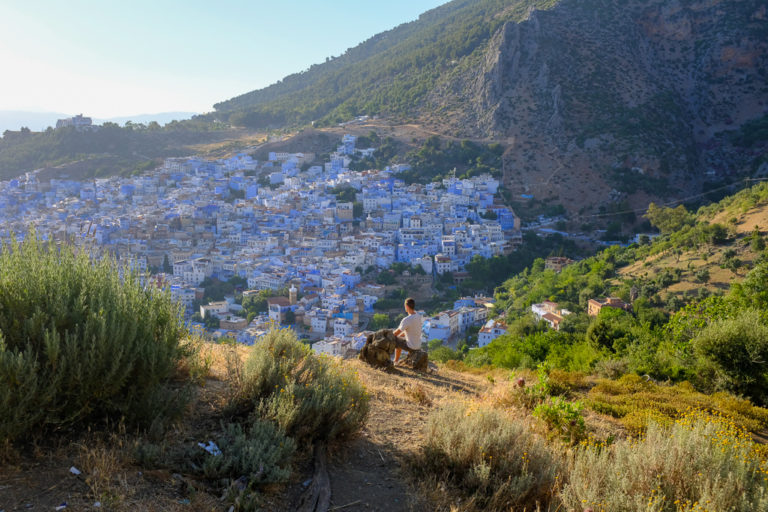
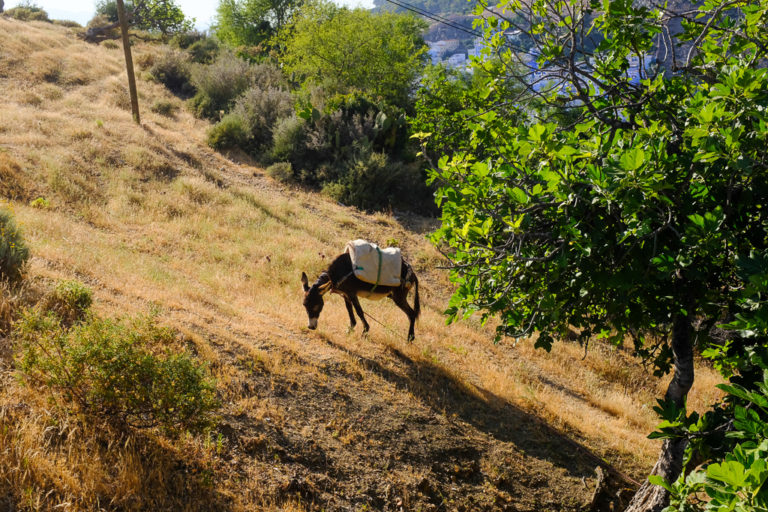
Walking from the mountains, we passed Ras El Ma, the local waterfall. It’s the first time I’ve seen such a strong community around a water source. People were literally placing their dining tables and chairs in the flowing river, so there would be a constant stream of water at their feet while they ate. They used the water to rinse off their oranges and some of them were even using it to make some kind of porridge.
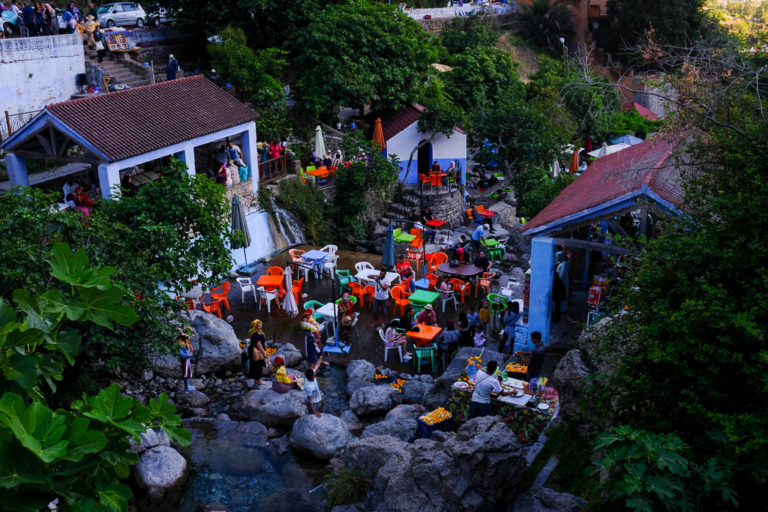
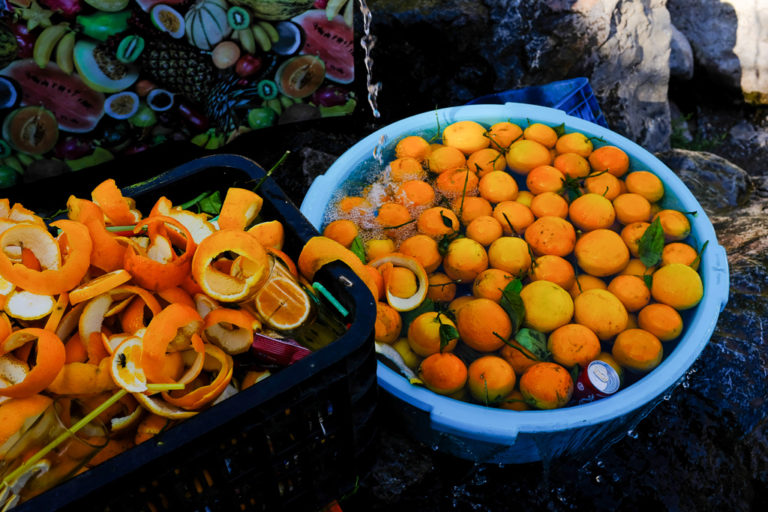
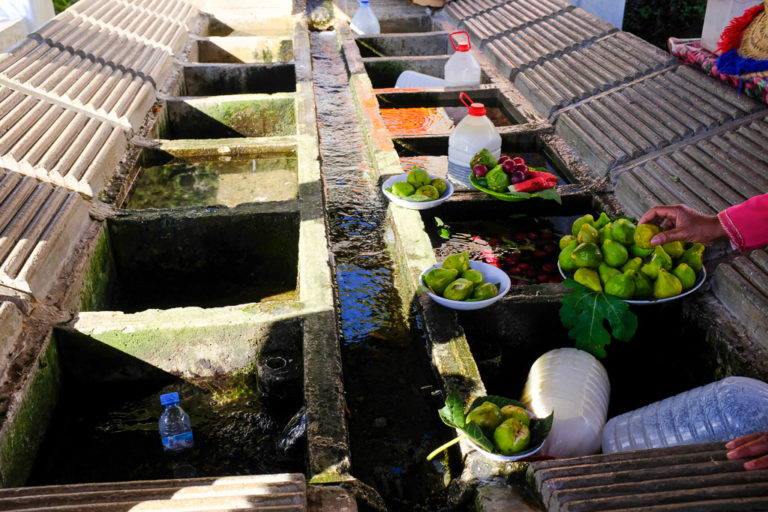
After our hike, we wandered around the blue city. The most popular explanation for the blue walls is because the Jewish rabbi wore a blue silk, which he referred to as a line to god or a symbol of heaven. So, when the Jews fled to Chefchaouen during the Spanish Inquisition, they decided to paint the houses this color as well.
There’s also a fun, nonsensical rumor that the walls are painted blue to ward off mosquitoes; supposedly, the flying bugs think it’s the ocean, so they don’t descend into the city. That’s why the walls colors tend to be in a gradient, getting darker lower to the ground, so it looks like the change in water color that occurs deeper into the ocean.
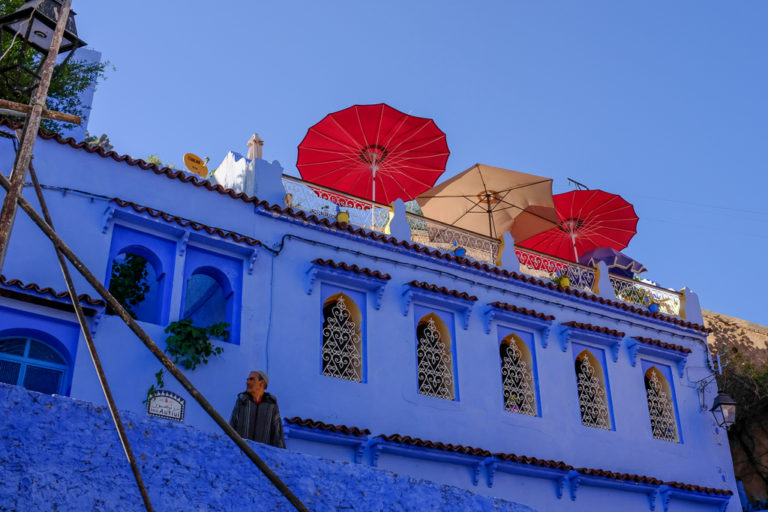
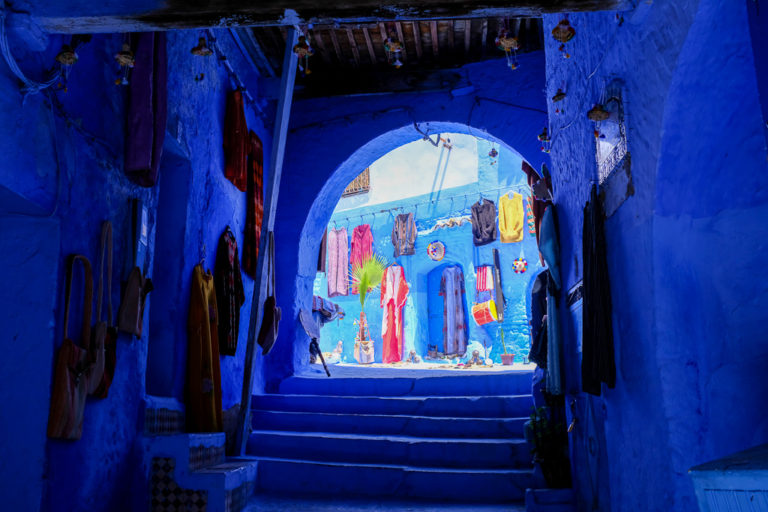
We loved the city not just for the color palette, but also for how enchanting it felt. We enjoyed the friendliness of the locals, the calmness of the streets. After visiting the hectic medinas of other cities in Morocco, listening to the sound of storekeepers beckoning us to look at their things, we really craved the sense of quiet. Here, we could walk into a store and nobody would pay attention to us.
We also enjoyed the buildings in general. Things feel a bit mismatched here: small doors, red tiled roofs, hanging flowerpots, and Spanish terraces. It doesn’t feel quite as uniform as other cities like Marrakech, but that’s the draw.
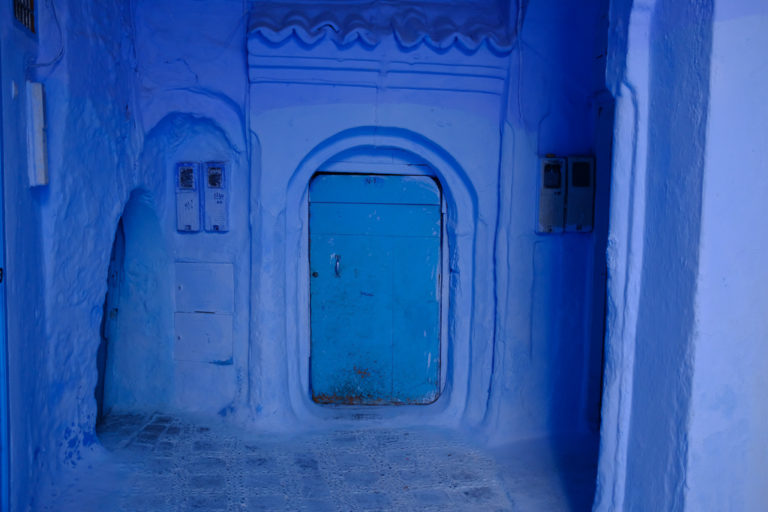
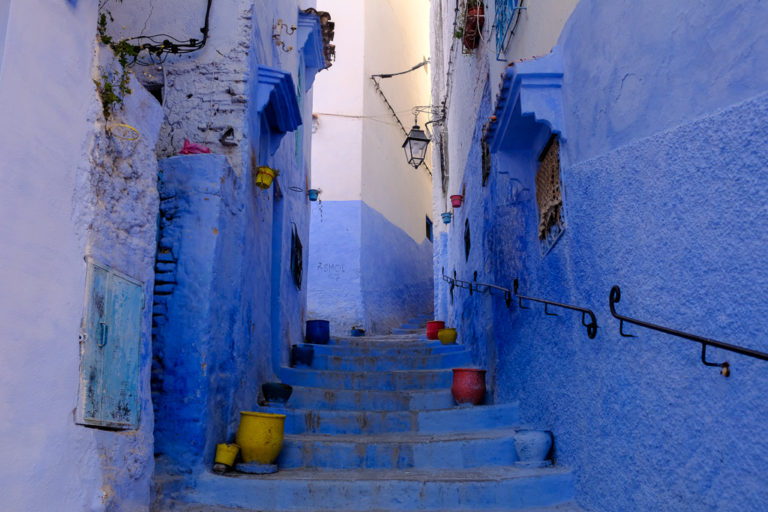
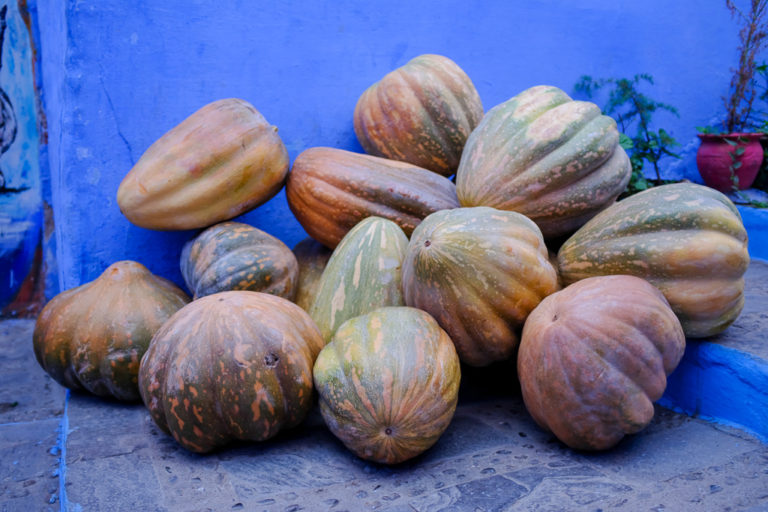
The viral, social media friendly destinations can often seem two-dimensional. They can set expectations for what we should be seeing, whether it’s blue walls in a city or a sunset view of a tree. But Chefchaoeun was so much more than blue walls, more than meets the eye (and screen). It was the highlight of our visit to Morocco and one of the most memorable cities we’ve been to.

